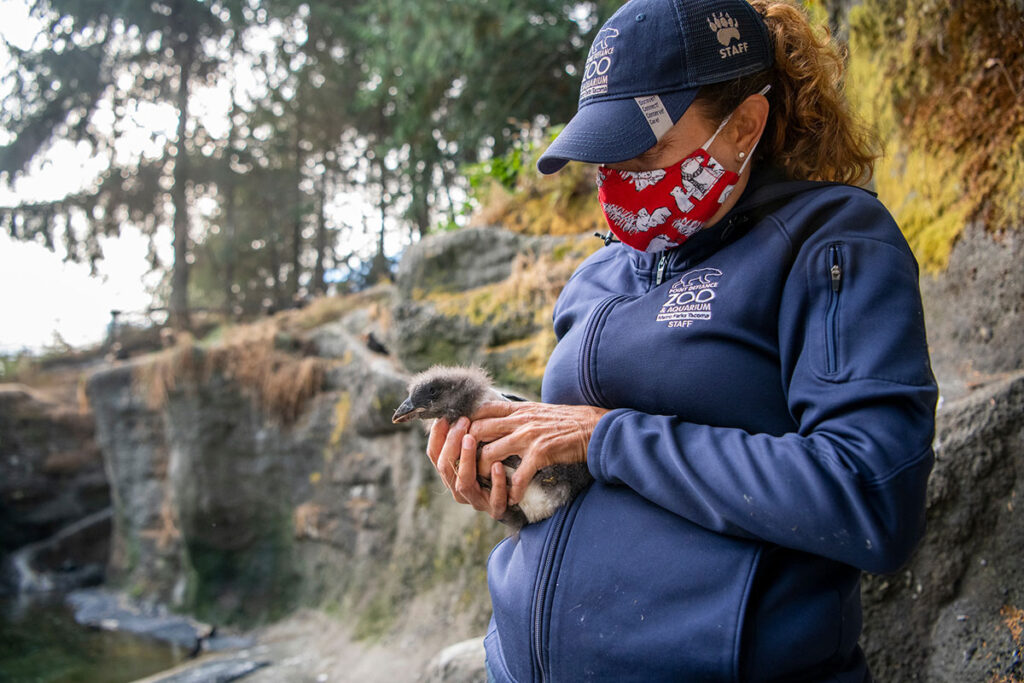On a rainy, late-summer morning in Tacoma, keeper Cindy is watching the puffins. She’s drenched, but that’s just part of the job she loves. The “unglamorous” part of keeper life some would say, but Cindy doesn’t mind.
On this drizzly day, it’s her responsibility to keep a close eye on the horned puffling (puffin chick) that keepers have named “Button.”
“Button is growing and exploring,” says Cindy. “He is feisty and vocal.”
Button is only the second horned puffin to be born at Point Defiance Zoo.

After pufflings hatch, they stay in a nest while their parents take turns bringing food. Eventually, they “fledge,” or leave their burrow and the parents stop feeding them. Keepers then train each bird to hand-feed from them.
“Hand-feeding all the puffins allows us to closely monitor individual birds and ensure they receive vitamins and any needed medications,” says Cindy. “We also weigh them during the feedings.”
Cindy says filleted herring seems to be a favorite for Button (and because it’s higher in fat content than other fish, it helps the bird grow quickly!)
“It takes pufflings around six weeks to grow to full size,” explained Cindy. “In the wild, once they leave the burrow, they go out alone to sea for 2 years at a time and care for themselves.”
In other words, the rain doesn’t bother the puffling either.
Visitors can currently see the horned puffling and two tufted pufflings out with the rest of the colony. They are already nearly the same size as the adults, but can be identified by their darker grey bills and feet.
In the wild, horned puffins live in Coastal Japan, Russia, British Columbia and Alaska. Tufted puffins live from Alaska to California and northern Asia.